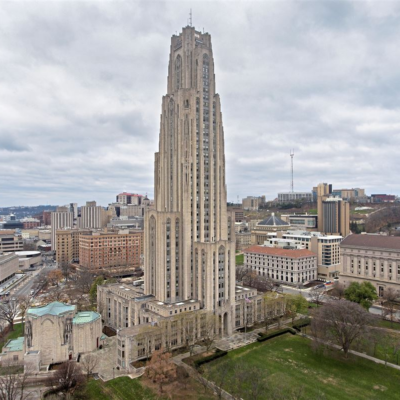Amazon is set to shake up the autonomous vehicle industry by announcing its plan to produce 10,000 robotaxis per year, positioning itself as a major player in the rapidly evolving world of automated transportation. This bold move puts Amazon in direct competition with Waymo, the autonomous driving arm of Alphabet (Google’s parent company), which has long been seen as a leader in the field.
The company is leveraging its autonomous vehicle subsidiary Zoox, which it acquired in 2020, to bring this plan to life. Zoox’s robotaxis are fully electric, bidirectional, and built from the ground up for autonomy—unlike traditional cars retrofitted with self-driving technology.
Aiming for Mass Deployment
Amazon’s goal of building 10,000 robotaxis each year marks one of the largest scale efforts in the driverless car space. According to reports, Zoox has already started testing its robotaxi fleet in cities like Las Vegas and San Francisco, and the company is working closely with regulators to ensure safety compliance and approval for full-scale deployment.

In an official statement, a Zoox spokesperson said, “We are designing our vehicle not just to drive itself, but to redefine urban mobility. Producing 10,000 units annually allows us to meet growing transportation demands while reducing emissions and traffic congestion.”
Why This Matters: Amazon vs. Waymo
Waymo has had a significant head start in the autonomous taxi race. The company began testing self-driving minivans as early as 2009 and launched its commercial Waymo One service in Phoenix, Arizona, in 2020. Waymo recently expanded to Los Angeles and parts of San Francisco, operating robotaxi services with safety drivers and, in some areas, fully driverless rides.
Amazon’s entry into this space at such a large production scale raises the stakes significantly. While Waymo retrofits existing vehicles with autonomous tech, Amazon and Zoox are betting on purpose-built vehicles. Zoox’s robotaxis are compact, symmetrical, and designed without steering wheels or pedals, offering a unique vision of the future of ride-hailing.
This head-to-head competition could push innovation further and faster, benefitting consumers and reshaping how we think about urban transportation.
What Makes Zoox Robotaxis Different?
Unlike Waymo and others who use traditional car models, Zoox robotaxis are built from scratch with autonomy in mind. These vehicles have:
- Bidirectional design (no front or back – can go either way)
- Four-wheel steering for tight turns in urban environments
- Seating for four passengers facing each other
- Zero-emissions electric drivetrain
- No steering wheels, pedals, or driver controls
This approach allows for greater efficiency, comfort, and safety, according to Zoox engineers. It also enables more flexibility in urban spaces, especially where U-turns and narrow street navigation are frequent challenges.
Production Plans and Facility Expansion
To meet its production goal of 10,000 robotaxis annually, Amazon is expanding its manufacturing capabilities. Zoox is reportedly ramping up its Fremont, California production site, and may explore additional facilities in Nevada or Texas in the future.
Amazon has not disclosed when full-scale robotaxi services will launch, but testing in controlled urban environments is underway. Analysts expect limited public services could begin by late 2025, with expansion in 2026 depending on regulatory approvals and safety validations.

Amazon’s logistics and hardware expertise could give it a competitive edge in scaling operations. Its existing infrastructure for Prime delivery and AWS (Amazon Web Services) integration with AI tools can support massive data processing required for autonomous navigation.
Safety and Regulation: A Key Focus
With any autonomous vehicle system, safety remains a top concern. Amazon and Zoox have invested heavily in redundant safety systems, AI-powered obstacle recognition, and real-time mapping technologies. Each robotaxi undergoes rigorous simulations and real-world testing to ensure performance under different road conditions.
The company is working closely with the National Highway Traffic Safety Administration (NHTSA) and state-level transport departments to meet evolving autonomous vehicle laws. Zoox has also emphasized transparency, regularly publishing safety reports and working with urban planners to integrate their vehicles into cities.
The Bigger Picture: The Future of Urban Mobility
Amazon’s robotaxi initiative is part of a broader global trend to shift toward electric, autonomous, and shared mobility systems. Companies like Tesla, Cruise, and Baidu are also investing heavily in autonomous technologies. However, Amazon’s scale and logistics muscle make it a particularly formidable player.
Industry analysts believe Amazon’s entry into the robotaxi market could be a game-changer, especially as cities seek greener, more efficient transportation options. According to McKinsey, autonomous vehicles could account for up to 25% of all vehicle sales by 2035, with robotaxis playing a major role.
Conclusion: A Bold Move That Could Reshape Transportation
Amazon’s plan to build 10,000 robotaxis per year marks a significant leap in the competition to dominate the autonomous ride-hailing market. While Waymo remains a leader with operational services in multiple cities, Amazon’s approach—using purpose-built, electric vehicles from Zoox—signals a shift in how companies are thinking about urban mobility.
As testing continues and production ramps up, the rivalry between Amazon and Waymo is set to intensify, ultimately driving innovation and bringing us closer to a world of safe, efficient, and autonomous transport.
Also Read – Revolutionary Smart Glasses Train Robots—No Hands Needed






